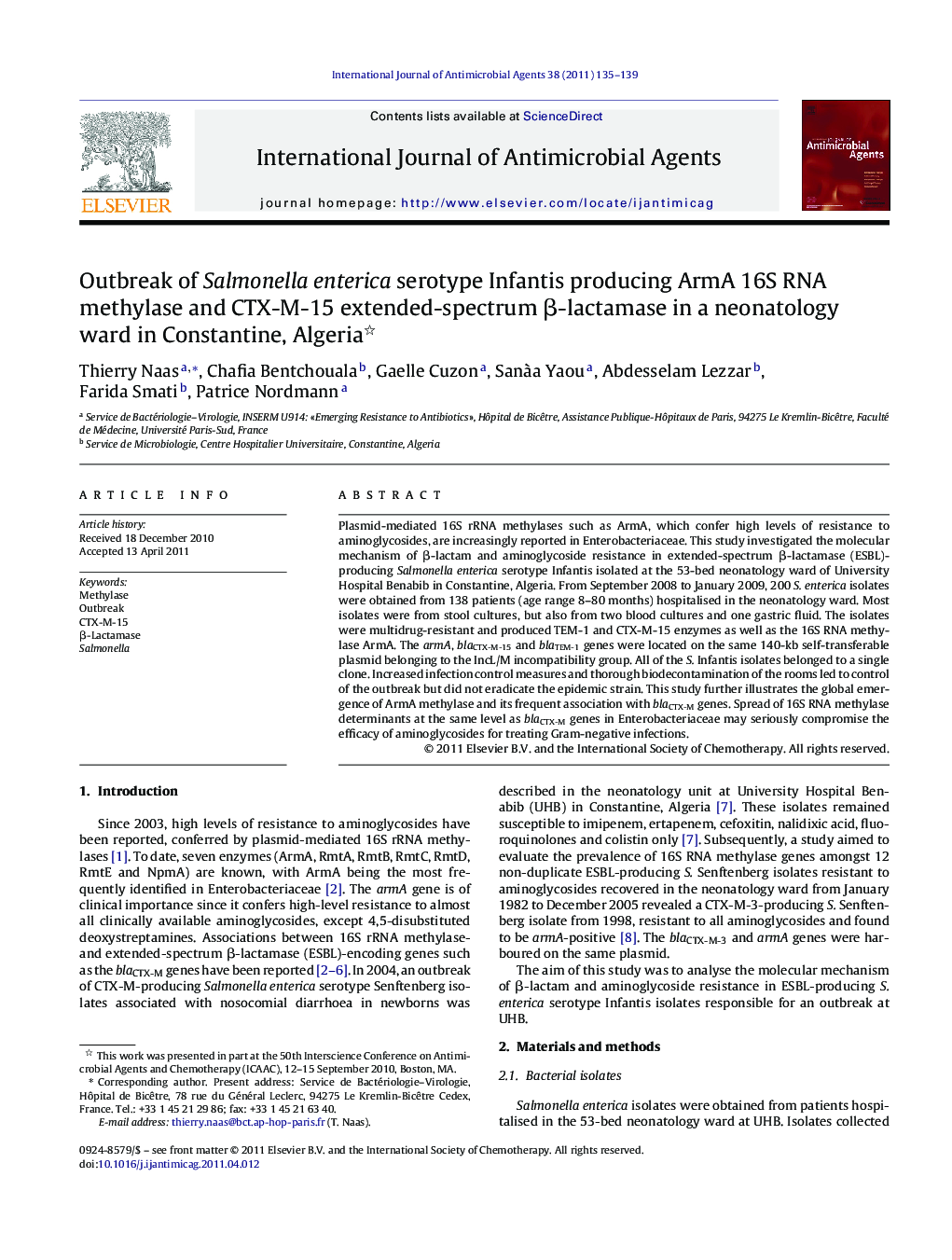| Article ID | Journal | Published Year | Pages | File Type |
|---|---|---|---|---|
| 3359506 | International Journal of Antimicrobial Agents | 2011 | 5 Pages |
Plasmid-mediated 16S rRNA methylases such as ArmA, which confer high levels of resistance to aminoglycosides, are increasingly reported in Enterobacteriaceae. This study investigated the molecular mechanism of β-lactam and aminoglycoside resistance in extended-spectrum β-lactamase (ESBL)-producing Salmonella enterica serotype Infantis isolated at the 53-bed neonatology ward of University Hospital Benabib in Constantine, Algeria. From September 2008 to January 2009, 200 S. enterica isolates were obtained from 138 patients (age range 8–80 months) hospitalised in the neonatology ward. Most isolates were from stool cultures, but also from two blood cultures and one gastric fluid. The isolates were multidrug-resistant and produced TEM-1 and CTX-M-15 enzymes as well as the 16S RNA methylase ArmA. The armA, blaCTX-M-15 and blaTEM-1 genes were located on the same 140-kb self-transferable plasmid belonging to the IncL/M incompatibility group. All of the S. Infantis isolates belonged to a single clone. Increased infection control measures and thorough biodecontamination of the rooms led to control of the outbreak but did not eradicate the epidemic strain. This study further illustrates the global emergence of ArmA methylase and its frequent association with blaCTX-M genes. Spread of 16S RNA methylase determinants at the same level as blaCTX-M genes in Enterobacteriaceae may seriously compromise the efficacy of aminoglycosides for treating Gram-negative infections.
